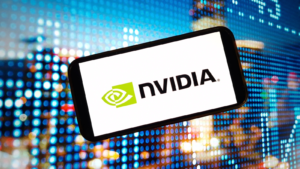There could be a valid reason to do this. A favorite indicator of Warren Buffett (that he doesn’t really rely upon anymore) says the market has reached a top. Weighing the value of the market against the size of the economy gives an idea of where stock valuations stand. MarketWatch recently ran the numbers and found the ratio above 2, which is a level last seen in 2022.
Buffett once called the indicator “probably the best single measure of where valuations stand at any given moment.”
While the stock market might fall or even crash, for investors with a long-term mindset, it is just a hiccup. The market always bounces back and goes on to higher highs. And a correction is an excellent opportunity to buy. Picking up good companies at a discount is the surest way to build lasting wealth.
While we’re not in those conditions just yet, below are still the three best stocks to buy for long-term investors with $1,000 to put to work in the market.
Microsoft (MSFT)

Tech giant Microsoft (NASDAQ:MSFT) should be at the top of your best stocks to buy list. At almost any time over the past decade, you would have done well buying MSFT stock. A $1,000 investment 10 years ago would be worth over $11,000, including dividends. And that includes the period in 2022 when shares lost more than 30% of their value.
Even if you had bought just before the stock crashed, you would still be up 27% today versus an 18% gain by the S&P 500. So, don’t worry so much about when you buy, just make sure to buy and hold for the long term.
Artificial intelligence (AI), of course, remains the primary driver for the tech titan, especially for its Azure cloud business. AI added 700 basis points to Azure’s growth in its fiscal third quarter and underscores the benefit of Microsoft’s hybrid cloud strategy.
Offering clients the option of having their data on-premises or in the cloud allows them to migrate their business over time at their own pace. The cloud is still new to most businesses, and major IT failures such as occurred the other day due to the CrowdStrike (NASDAQ:CRWD) snafu will cause companies to hesitate. Microsoft will continue to dominate the on-premise market and bolster its bottom line.
Nvidia (NVDA)

In that same vein, Nvidia (NASDAQ:NVDA) is one of the best stocks to buy now. As the preeminent AI chipmaker, it will be the behind-the-scenes powerbroker for data centers and hyperscalers like Microsoft. Its ownership of the graphics processing unit (GPU) market can’t be understated.
It provides the hardware and software tools companies need in the rapidly expanding AI space, and the latter is why Nvidia is the runaway leader. Its Compute Unified Device Architecture (CUDA) is a programming language that allows developers to write applications for GPUs. It separates Nvidia from every other AI chipmaker on the market. By providing seamless integration with its chips, CUDA allows engineers and scientists to program the GPUs “to solve mathematically-intensive problems that were previously cost prohibitive.”
It also makes it nearly impossible for customers to change vendors because of the high switching costs associated with the software. It virtually locks clients in for life.
Of course, it is Nvidia’s constant research, development and advancement of chip technology, that puts it far ahead of the competition. While rival chipmakers are left fighting over last year’s advances, Nvidia is already developing next year’s chips and looking beyond to see what comes after that.
Because Nvidia is just miles ahead of the competition, it will continue to own the space for years to come. That is why NVDA is one of the best stocks to buy now.
QXO (QXO)

Going in a completely different direction, QXO (NYSE:QXO) is a building products distribution stock looking to roll up the industry under its umbrella. Headed by Bradley Jacobs, who specializes in buying up businesses to create industry giants, QXO just paved the way to begin the process.
It recently completed a $3.5 billion private placement and followed that with a second $620 million private placement. QXO now has no debt and a war chest of about $5 billion to begin its buying spree.
Normally a growth-by-acquisition strategy is risky. Integrating new companies, especially with larger deals, can often bog down and divert management attention away from core operations. But Jacobs is a master of the technique. He has successfully done it in waste management, equipment rental and logistics. Jacobs has built several multi-billion-dollar businesses over the years, including United Waste Systems, which is now part of Waste Management (NYSE:WM), United Rentals (NYSE:URI) and XPO (NYSE:XPO).
He then spun out RXO (NYSE:RXO) and GXO (NYSE:GXO) from XPO into some of the largest trucking and logistics businesses. I fully expect him to succeed with QXO in the same way.
On the date of publication, Rich Duprey did not hold (either directly or indirectly) any positions in the securities mentioned in this article. The opinions expressed in this article are those of the writer, subject to the InvestorPlace.com Publishing Guidelines.
On the date of publication, the responsible editor did not have (either directly or indirectly) any positions in the securities mentioned in this article.
Rich Duprey has written about stocks and investing for the past 20 years. His articles have appeared on Nasdaq.com, The Motley Fool, and Yahoo! Finance, and he has been referenced by U.S. and international publications, including MarketWatch, Financial Times, Forbes, Fast Company, USA Today, Milwaukee Journal Sentinel, Cheddar News, The Boston Globe, L’Express, and numerous other news outlets.
